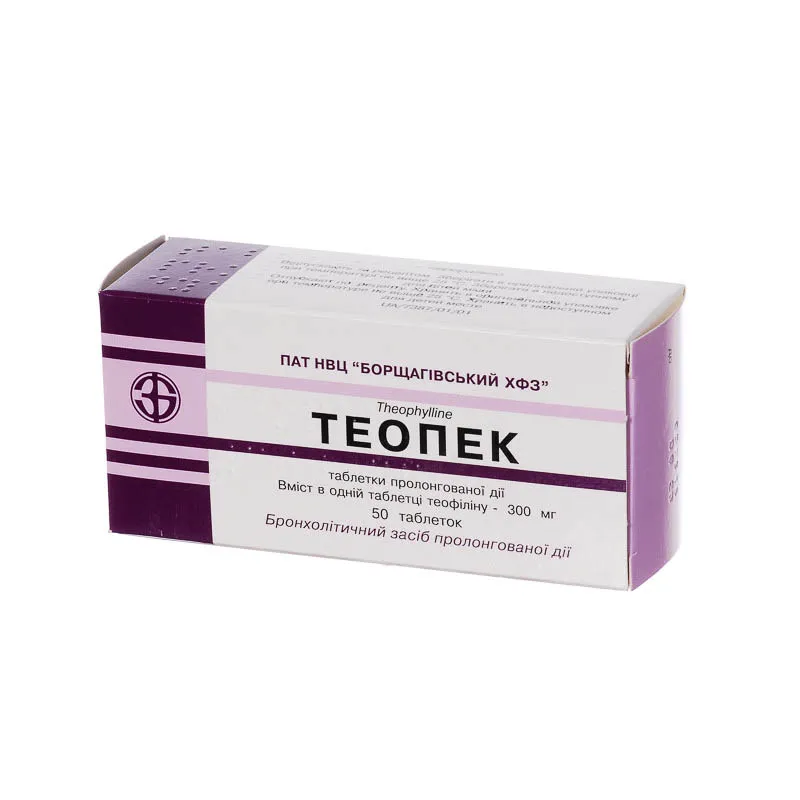Description
Teopek (Theophylline) Tablets with Prolonged Release 300 mg. №50
Ingredients
- Active ingredient: Theophylline 300 mg.
- Other ingredients: lactose monohydrate, hypromellose, magnesium stearate, colloidal anhydrous silica.
Dosage
Recommended dosage: 1 tablet once daily, or as directed by a healthcare professional.
Do not crush or chew the tablets; swallow them whole with a glass of water.
Indications
Teopek tablets are indicated for the treatment of asthma and chronic obstructive pulmonary disease (COPD) to improve breathing.
Contraindications
- Do not use Teopek tablets if you are allergic to theophylline or any other ingredients in the product.
- Consult your doctor before use if you have a history of heart disease, liver or kidney problems.
Directions
Take Teopek tablets exactly as prescribed by your healthcare provider.
Do not exceed the recommended dosage without medical supervision.
Scientific Evidence
Theophylline, the active ingredient in Teopek tablets, works by relaxing the muscles in the airways and lungs, making it easier to breathe. Studies have shown that theophylline can improve lung function and reduce the frequency of asthma attacks when used consistently.
Additional Information
- It is important to monitor theophylline levels in the blood regularly to ensure optimal dosage and avoid toxicity.
- Inform your healthcare provider about all medications you are taking to prevent potential drug interactions.
Pharmacological Effects: Theophylline acts as a bronchodilator, widening the air passages in the lungs and allowing for easier breathing. It also has anti-inflammatory effects, reducing swelling in the airways.
Clinical Trials: Clinical trials have demonstrated the effectiveness of theophylline in improving lung function and reducing symptoms of asthma and COPD. A study published in the Journal of Allergy and Clinical Immunology showed that theophylline, when used in combination with other asthma medications, led to a significant improvement in lung function compared to placebo.



